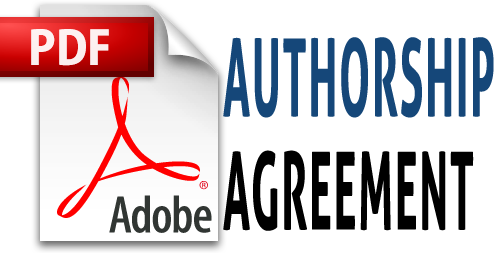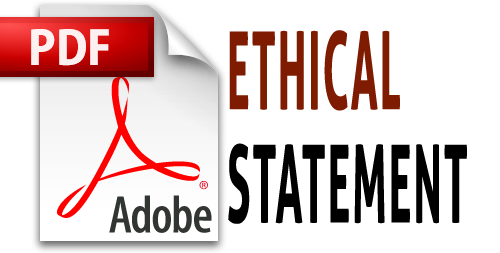THE EFFECTIVENESS ONLINE LEARNING MEDIUM IN INCREASING VOCATIONAL EDUCATION STUDENT MOTIVATION
 nFn Sutirman(1*),
nFn Yuliansah(2),
Muslikhah Dwihartanti(3)
nFn Sutirman(1*),
nFn Yuliansah(2),
Muslikhah Dwihartanti(3)
(1) Universitas Negeri Yogyakarta
(2) Universitas Negeri Yogyakarta
(3) Universitas Negeri Yogyakarta
(*) Corresponding Author
 Abstract viewed : 1540
|
Abstract viewed : 1540
|  PDF downloaded : 221
PDF downloaded : 221
Abstract
The industrial era 4.0 demands changes in various aspects of life, including using the learning strategies and media. A learning strategy that suits the demands of the industrial era 4.0 is online learning using digital information technology-based. Many platforms offered to teachers for online learning, both paid and free platforms. Google Classroom is an example of a free online learning platform. Meanwhile, Office Administration Vocational School teacher usualy conduct offline learning using PowerPoint. This study aimed to find out the effectiveness of learning media of Google Classroom and PowerPoint in increasing the learning motivation of students in Office Administration Vocational School (OAVS) in the Special Region of Yogyakarta. This study used a quantitative approach, a quasi-experimental method, and a non-equivalent control group design model. The population was students of OAVS in the Special Region of Yogyakarta, covering four districts and one city. The sample was selected by cluster sampling technique based on the districts or city. Each district or city selected two schools as a sample, in which homogenous in characteristics. Data collection techniques used observation, documentation, and focus group discussion.
Abstrak
Era industri 4.0 menuntut perubahan dalam berbagai aspek kehidupan, termasuk penggunaan strategi dan media pembelajaran. Strategi pembelajaran yang sesuai dengan tuntutan era industri 4.0 adalah pembelajaran online menggunakan berbasis teknologi informasi digital. Banyak platform yang ditawarkan kepada guru untuk pembelajaran online, baik platform berbayar maupun gratis. Google Classroom adalah contoh platform pembelajaran online gratis. Sedangkan guru SMK Administrasi Perkantoran biasanya melakukan pembelajaran offline dengan menggunakan PowerPoint. Penelitian ini bertujuan untuk mengetahui keefektifan media pembelajaran Google Classroom dan PowerPoint dalam meningkatkan motivasi belajar siswa SMK Administrasi Perkantoran di Daerah Istimewa Yogyakarta. Penelitian ini menggunakan pendekatan kuantitatif, metode eksperimen semu, dan model desain kelompok kontrol non-ekuivalen. Populasi dalam penelitian ini adalah siswa SMK Administrasi Perkantoran di Daerah Istimewa Yogyakarta yang meliputi empat kabupaten dan satu kota. Sampel dipilih dengan teknik cluster sampling berdasarkan kabupaten atau kota. Setiap kabupaten atau kota memilih dua sekolah sebagai sampel yang sifatnya homogen. Teknik pengumpulan data menggunakan observasi, dokumentasi, dan focus group discussion.
Keywords
References
Aji, R. H. S. (2020). Dampak Covid-19 pada Pendidikan di Indonesia: Sekolah, Keterampilan, dan Proses Pembelajaran. Salam: Jurnal Sosial dan Budaya Syar-i, 7(5), 395-402. https://doi.org/10.15408/sjsbs.v7i5.15314
Alim, N., Linda, W., Gunawan, F., & Saad, M. S. M. (2019). The Effectiveness of Google Classroom As An Instructional Media: A Case of State Islamic Institute of Kendari, Indonesia. Humanities and Social Sciences Reviews, 7(2), 240–246. https://doi.org/10.18510/hssr.2019.7227
Al-Maroof, R. A. S., & Al-Emran, M. (2018). Students Acceptance of Google Classroom: An Exploratory Study Using PLS-SEM Approach. International Journal of Emerging Technologies in Learning (iJET), 13(06), 112-123. https://doi.org/10.3991/ijet.v13i06.8275
Ames, C. (1992). Clasrooms : Goals, Structures, and Motivation. Journal of Educational Psychology, 84(3), 261–271. https://doi.org/https://doi.apa.org/doi/10.1037/0022-0663.84.3.261
Austin, D. (2009). Beginnings of PowerPoint. Retrieved April 18, 2021, from https://www.computerhistory.org/collections/catalog/102745695
Azhar, K. A., & Iqbal, N. (2018). Effectiveness of Google classroom: Teachers’ perceptions. Prizren Social Science Journal, 2(2), 52-66.
Baker, J. P., Goodboy, A. K., Bowman, N. D., & Wright, A. A. (2018). Does teaching with PowerPoint increase students’ learning? A meta-analysis. Computers and Education, 126, 376–387. https://doi.org/10.1016/j.compedu.2018.08.003
Budiman, H. (2017). Peran teknologi informasi dan komunikasi dalam pendidikan. Al-Tadzkiyyah: Jurnal Pendidikan Islam, 8(1), 31-43.
Bhat, S., Raju, R., Bikramjit, A., & D'Souza, R. (2018). Leveraging E-learning through Google classroom: A usability study. Journal of Engineering Education Transformations, 31(3), 129-135. https://doi.org/10.16920/jeet/2018/v31i3/120781
Brock, S., & Joglekar, Y. (2011). Empowering PowerPoint: Slides and Teaching Effectiveness. Interdisciplinary Journal of Information, Knowledge, and Management, 6. https://doi.org/https://doi.org/10.28945/1366
Brodsky, D., & Doherty, E. G. (2011). Creating an effective PowerPoint presentation. NeoReviews, 12(12). https://doi.org/10.1542/neo.12-12-e687
Chang, V., & Fisher, D. (2001). The Validation and Application of a New Learning Environment Instrument to Evaluate Online Learning in Higher Education. AARE Annual Conference, 1–16.
Daniel, S. J. (2020). Education and the COVID-19 Pandemic. Prospects, 1-6. https://doi.org/10.1007/s11125-020-09464-3
Deci, E. L., & Ryan, R. M. (1985). Intrinsic Motivation and Self-determination in Human Behavior. New York: Plenum Press.
Dewi, N., Zahrowati, E., & Sulistyawati, M. E. S. (2019). the Implementation of Google Classroom in Improving Students’ Reading Comprehension At Man 4 Jakarta. ANGLO-SAXON: Jurnal Ilmiah Program Studi Pendidikan Bahasa Inggris, 10(2), 105. https://doi.org/10.33373/as.v10i2.2097
Dwihartanti, M., Sutirman, & Yuliansah. (2018). Utilization and Development of Learning Media by Teachers SMK of Office Administration in Special Region of Yogyakarta. Annual Conference of Management Challenges, 271–282. Yogyakarta: Yogyakarta States University.
Emda, A. (2018). Kedudukan Motivasi Belajar Siswa Dalam Pembelajaran. Lantanida Journal, 5(2), 172. https://doi.org/10.22373/lj.v5i2.2838
Entherington, D. (2017). Google Classroom now lets anyone school anyone else. Retrieved August 3, 2021, from https://social.techcrunch.com/2017/04/27/google-classroom-now-lets-anyone-school-anyone-else/
Fitriningtiyas, D. A., Umamah, N., & Sumardi. (2019). Google classroom: As a media of learning history. IOP Conference Series: Earth and Environmental Science, 243(1). https://doi.org/10.1088/1755-1315/243/1/012156
Gaskins, R. (1984). Sample Product Proposal: Presentation Graphics for Overhead Projection. Retrieved April 18, 2021, from http://www.gbuwizards.com/files/gaskins-original-powerpoint-proposal-14-aug-1984.pdf
Glynn, S.M. & Koball, T. R. (2006). Motivation to Learn College Science. Virginia: National Science Teachers Association Press.
Glynn, S.M., Brickman, P., Armstrong, N., & Taasoobshirazi, G. (2011). Science motivation questionnaire II: Validation with science majors and nonscience majors. Journal of Research in Science Teaching, 48(10), 1159–1176. https://doi.org/10.1002/tea.20442
Gunawan, F. I., & Sunarman, S. G. (2017). Pengembangan Kelas Virtual Dengan Google Classroom Dalam Keterampilan Pemecahan Masalah (Problem Solving) Topik Vektor Pada Siswa SMK Untuk Mendukung Pembelajaran. Prosiding Seminar Nasional Etnomatnesia. Daerah Istimewa Yogyakarta: Universitas Sarjanawiyata Tamansiswa.
Harandi, S. R. (2015). Effects of E-learning on Students’ Motivation. Procedia - Social and Behavioral Sciences, 181, 423–430. https://doi.org/10.1016/j.sbspro.2015.04.905.
Hidi, S. (2001). Interest, Reading, and Learning: Theoretical and Practical Considerations. Educational Psychology Review, 13(3), 191-209. https://doi.org/10.1023/A: 1016667621114
Hill, A., Arford, T., Lubitow, A., Smollin, L. M. (2012). “I’m ambivalent about it”: The dilemmas of PowerPoint. Teaching Sociology, 40, 242-256. doi:10.1177/ 0092055X12444071
Hodges, C., Moore, S., Lockee, B., Trust, T., & Bond, A. (2020). The difference between emergency remote teaching and online learning. Educause Review, 27.
Iftakhar, S. (2016). Google Classroom: What Works And How. Journal of Education and Social Sciences, 3(1), 12-18.
Indriani, E. (2019). Efektivitas Media Audio Visual Berbasis Powerpoint Terhadap Hasil Belajar Ipa Materi Sistem Tata Surya Pada Siswa Kelas VII SMP Negeri 4 Salatiga Tahun Pelajaran 2018/2019 (INSTITUT AGAMA ISLAM NEGERI (IAIN)SALATIGA). Retrieved from http://e-repository.perpus.iainsalatiga.ac.id/6471/
Jurca, L. (2018). What are the design goals for classroom? Retrieved August 3, 2021, from https://support.google.com/edu/classroom/forum/AAAAq1rTZJoLJO8SAlhQ1s/?hl=en&msgid=7_Kj06SBBwAJ&gpf=d/msg/google-education/LJO8SAlhQ1s/7_Kj06SBBwAJ
Karnegi, D. & Iswahyudi, I. (2019, February). Tantangan Pembelajaran Berbasis Teknologi Informasi Era Revolusi Industri 4.0 di SMA Negeri 5 Prabumulih. In Prosiding Seminar Nasional Program Pascasarjana Universitas PGRI Palembang (Vol. 12, No. 01).
Keller, A. (2014). 15 MORE Things You Can Do With Google Classroom. Retrieved April 2, 2021, from https://alicekeeler.com/2014/09/22/15-more-things-you-can-do-with-google-classroom/
Lalabegyan, A. B., Martirosyan, M. B., & Sarkisyan, A. R. (2017). Modern technologies (google classroom) as a means of boosting learners’ motivation. 38–44. https://doi.org/10.18411/lj-25-12-2017-45
Levasseur, D. G., & Sawyer, K. (2006). Pedagogy meets PowerPoint: A research review of the effects of computer-generated slides in the classroom. The Review of Communication, 6, 101-123. doi:10.1080/15358590600763383
Maslow, A. (1943). A theory of human motivation. Psychological Review, 50(4), 370–396. https://doi.org/https://doi.org/10.1037/h0054346
Mubeen, S., & Reid, N. (2015). The Measurement of Motivation with Science Students. Mubeen, Sarwat Reid, Norman, 3(3), 1551p. https://doi.org/10.1364/CLEO_QELS.2015.FTh1B.3
Nurhasanah, S., & Sobandi, A. (2019). Motivasi belajar sebagai determinan hasil belajar siswa. Jurnal Pendidikan Manajemen Perkantoran, 1(1), 128–135. https://doi.org/10.17509/jpm.v4i1.14958
Penciner, R. (2013). Does PowerPoint enhance learning?. Canadian Journal of Emergency Medicine, 15(2), 109-112.
Priya, M. M. (2012). PowerPoint Use in Teaching. Institute of Technology, 1–3. Retrieved from http://www.cs.iit.edu/~cs561/spring2012/PowerPoint/ChenQ.pdf
Pros, C., Tarrida, C., Martin, B., Mar, M., Amores, C., Pros, R. C., … Badia, M. (2014). Effects of the PowerPoint methodology on content learning. Intangible Capital, 9(1), 184–198. https://doi.org/https://dx.doi.org/10.3926/ic.370
Puklek Levpušček, M., & Zupančič, M. (2009). Math Achievement in Early Adolescence. The Journal of Early Adolescence, 29(4), 541–570. https://doi.org/10. 1177/ 0272431608324189
Savoy, A., Proctor, R. W., & Salvendy, G. (2009). Information retention from PowerPointTM and traditional lectures. Computers and Education, 52(4), 858–867. https://doi.org/10.1016/j.compedu.2008.12.005
Schiefele, U. (1996). Topic Interest, Text Representation, and Quality of Experience. Contemporary Educational Psychology, 21(1), 3-18. https://doi.org/10.1080/00461520.1991.9653136
Shaharanee, I. N. M., Jamil, J. M., & Rodzi, A. S. S. M. (2016a). The application of Google Classroom as a tool for teaching and learning. Journal of Telecommunication, Electronic and Computer Engineering, 8(10), 5–8.
Shaharanee, I. N. M., Jamil, J. M., & Rodzi, S. S. M. (2016b). Google classroom as a tool for active learning. AIP Conference Proceedings, 1761. https://doi.org/10.1063/1.4960909
Shampa, I. (2016). Google classroom: What works and how? Journal of Education and Social Sciences, 3, 12–18.
Slameto. (2010). Belajar dan Faktor-Faktor Yang Mempengaruhinya. Jakarta: PT. Rineka Cipta.
Stepp-Greany, J. (2002). Student perceptions on language learning in a technological environment: Implications for the new millennium. Language Learning and Technology, 6(1), 165–180.
Sulasteri, S., Rasyid, M. R., & Akhyar, M. (2018). The Effect of the use of Learning Media Based On Presentation Media On Interest and Mathematical Learning Outcomes. MaPan: Jurnal Matematika dan Pembelajaran, 6(2), 221-236. https://doi.org/10.24252/mapan.2018v6n2a8
Supriyadi, S. (2016). Adobe Flash Untuk Mendukung Pembelajaran. Jurnal Komunikasi, 7(2).Su’uga, H. S. (2020). MEDIA E-LEARNING BERBASIS GOOGLE CLASSROOM UNTUK MENINGKATKAN HASIL BELAJAR SISWA SMK Hisyam Surya
Su ’ uga Euis Ismayati , Achmad Imam Agung , Tri Rijanto. Jurnal Pendidikan Teknik Elektro, 09(3), 605–610.
Syauqi, K. et al (2020). The effect of information and communication technology with learning activities towards student performance. In Journal of Physics: Conference Series (Vol. 1446, No. 1, p. 012019). IOP Publishing.
Togia, A., Korobili, S., & Malliari, A. (2011). Motivation to learn and learning strategies: IT courses in a library and information science department. Library Review, 61(1), 41–56. https://doi.org/10.1108/00242531211207415
Waheeda, S., & Murty, K. S. (2015). A comparative study of blackboard teaching with PowerPoint teaching in 1 year medical students. National Journal of Basic Medical Sciences, 6(1). Retrieved from https://njbms.in/abstract.php?article_id=1587
Wahyuni, D. (2018). Peningkatan Kompetensi Guru Menuju Era Revolusi Industri 4.0. Pusat Penelitian Badan Keahlian DPR RI, 9(24), 13-18.
Yusuf, A. M. (2015). Pengembangan Media Pembelajaran Berbasis Adobe Flash untuk Mata Kuliah Fisika Modern Materi Radiasi Benda Hitam. Jurnal Sains Dan Pendidikan Fisika, 11(1).
Refbacks
- There are currently no refbacks.
Copyright (c) 2022 nFn Sutirman, nFn Yuliansah, Muslikhah Dwihartanti

This work is licensed under a Creative Commons Attribution-NonCommercial 4.0 International License.
Kwangsan Indexed By
Kwangsan: Jurnal Teknologi Pendidikan diterbitkan oleh Balai Besar Guru Penggerak (BBGP) Prov. Jawa Timur.
Kementerian Pendidikan dan Kebudayaan
Alamat Redaksi:
Jl. Mangkurejo, Ds. Kwangsan, Sedati - Sidoarjo.
Telp 0318911373 Fax. 0318911392
Email: jurnal.kwangsan@kemdikbud.go.id & jurnalkwangsan@dikbud.belajar.id






























